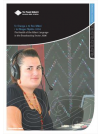This report provides an overview of Māori Language Broadcasting in 2006. It reports data about listenership and viewership, and describes some important recent developments in this sector.
Purpose
This report provides an overview of Māori Language Broadcasting. It reports data about listenership and viewership, and highlights key issues and activities in the Māori broadcasting sector in recent years. This information can then be used as a platform from which to consider the future direction of this work in terms of language revitalisation goals.
Key Results
Overview of opportunities and engagement in Mäori language broadcasting:
Iwi Radio
• Approximately three quarters of Māori adults were aware that they could access an iwi radio station in the area that they lived. 70% of those with access tuned in to iwi radio.
• Individuals with higher Māori language profi ciency were more likely to listen to iwi radio.
• The most frequent reason given for not listening to iwi radio was that the respondent couldn’t understand Māori.
• There has been a decrease in both the frequency and the duration that people listen to iwi radio since 2001.
Māori Language on Television
• 71% of Māori adults watched Māori language programming on mainstream television. 73% of these people watched at least once a week.
• There has been a significant increase in the number of people watching Māori language programming on mainstream television on a daily basis.
• 30% of Māori adults are watching more Māori language programmes on mainstream television than a year ago, while 17% are watching less.
• 56% of HML 2006 Survey respondents reported they had watched Māāri Television.
• The level of satisfaction with the amount of Māori programming on television has increased from 27% to 43% since 2001 (an increase of 16 percentage points).

